2022 is the year of two new GPU series — one from Nvidia and one from AMD. So, this seems like a good time to check older models because, let’s face it, who has three grand for a GPU?! A well-regarded series from Nvidia is the GTX 10 series, as is AMD’s answer to it — the RX 500 series. In this article, I’ll compare the GTX 1050 Ti and the RX 570.
This 1050 Ti vs RX 570 comparison revisits these cards, why they were so popular in their time, and if they’re worth anything today in 2023. In other words, you’ll find out whether they’re still worth buying now.
1050 Ti vs RX 570 – Quick Comparison
| GTX 1050 Ti | Specs | RX 570 |
|---|---|---|
| GP107-400-A1 | GPU | Polaris 20 XL (215-0910052) |
| PCIe 3.0 x16 | Interface | PCIe 3.0 x16 |
| 768 | Cores | 2,048 (Stream Processors) |
| 48 | TMUs | 128 |
| 1,291 MHz | Base Clock (Founders Edition) | 1,168 MHz |
| 1,392 MHz | Boost Clock (Founders Edition) | 1,244 MHz |
| 4 GB GDDR5 | Memory | 8 GB GDDR5 4 GB GDDR5 |
| 1,752 MHz (7 Gbps effective) | Memory Speed | 1,750 MHz (7 Gbps effective) |
| 112.1 GB/s | Bandwidth | 224.0 GB/s |
| 128-bit | Memory Bus | 256-bit |
| 75 W | TDP (Founders Edition) | 150 W |
| 250 W | Required PSU (Founders Edition) | 450 W |
| 65℃ (149℉) | Max Recorded Temp (Founder Edition) | 74℃ (165.2℉) |
| 97℃ (206.6℉) | Max Allowed Temp (Founder Edition) | 98℃ (208.4℉) |
| 45dB | Max Fan Noise (Founders Edition) | 38dB |
| 1x DVI 1x HDMI 2.0 1x DisplayPort 1.4a | Outputs (Founders Edition) | 1x DVI 1x HDMI 2.0b 3x DisplayPort 1.4a |
Nvidia GeForce GTX 1050 Ti
Nvidia released the GTX 1050 Ti in 2016 as part of the GTX 10 series. The series was based on the Pascal microarchitecture. The GTX 1050 Ti is an entry-level card with less than a thousand cores, a 4GB VRAM, and a very low TDP. The 1050 Ti falls short in performance compared to the RX 570, with the RX 570 offering 50% better performance, according to user tests.
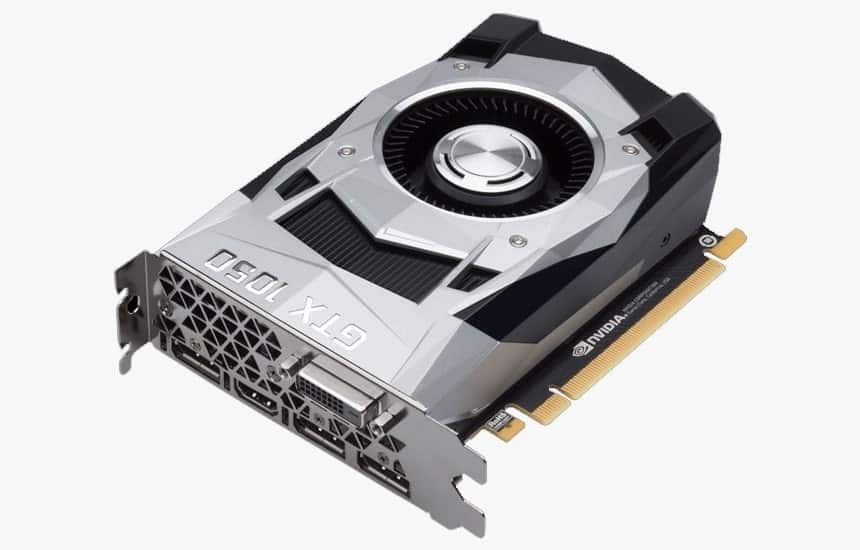
Nvidia is a leading GPU developer, which has given us some of the best GPUs ever. Apart from that, Nvidia is focused on powering the AI revolution with its immensely powerful GPUs.
Pros:
- Higher clock speeds
- Better shaders
- Lower TDP
- Lower price
Cons:
- Lower performance
- Smaller VRAM
AMD Radeon RX 570
AMD released the mid-range RX 570 in 2017. It was part of the RX 500 series, also known as GCN 4.0. It was based on the same GPU variant as the RX 580 but with 256 cores locked to achieve a specific shader count. Two versions were offered: a 4 GB and an 8 GB VRAM.
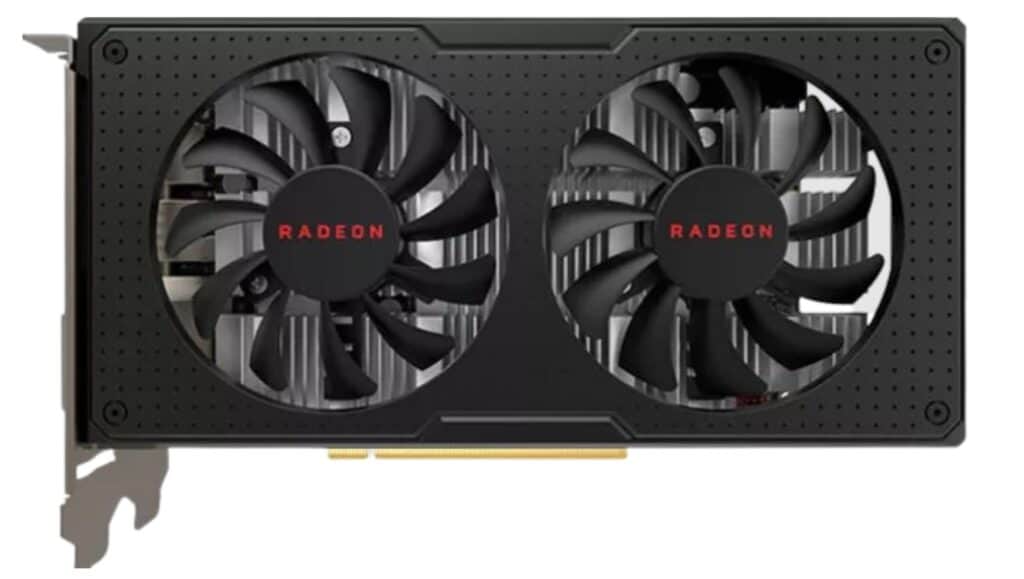
AMD is a long-standing producer of CPUs, GPUs, and other components. It has given us some of the best CPUs but has always somewhat struggled with its GPUs. The RX 500 series is one of the rare examples where AMD was able to beat the competition outright.
Pros:
- Larger VRAM
- More Cores
- Better performance
- More TMUs
Cons:
- Higher TDP
- Higher price
1050 Ti vs RX 570 – Key Specifications
Architecture
Pascal
Pascal was introduced with the GTX 10 series, offering significant improvements upon its predecessor. It was VR and HDR ready and featured several new technologies and tech geared toward Nvidia’s new focus, AI research and development.
Polaris
Polaris, or GCN 4.0, was less of an improvement than its predecessor, GCN 3.0. Instead, AMD utilized production advancements that allowed for greater performance (higher speeds) on what was essentially the same architecture.
Winner: GTX 1050 Ti
Clock Speeds & Overclocking
The GTX 1050 Ti offers slightly higher clock speeds than the RX 570, but its low lore count cuts it off at the knees in terms of performance. The GTX 1050 Ti has a base clock speed of 1,291 MHz and a boost clock of 1,392 MHz. The RX 570 has a base clock of 1,168 MHz and a boost clock of 1,244 MHz.
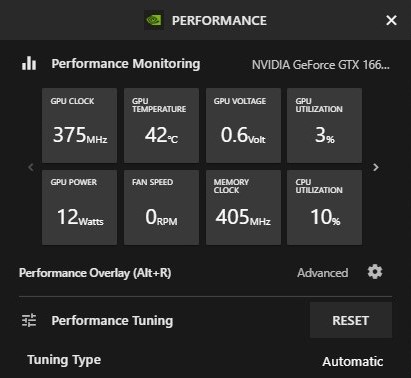
Both cards feature dynamic clock speeds meaning they’ll raise or drop clock speeds as required. Overclocking them can do more harm than good. Most third-party variants come factory-overclocked and hold up their end pretty well in real-world situations.
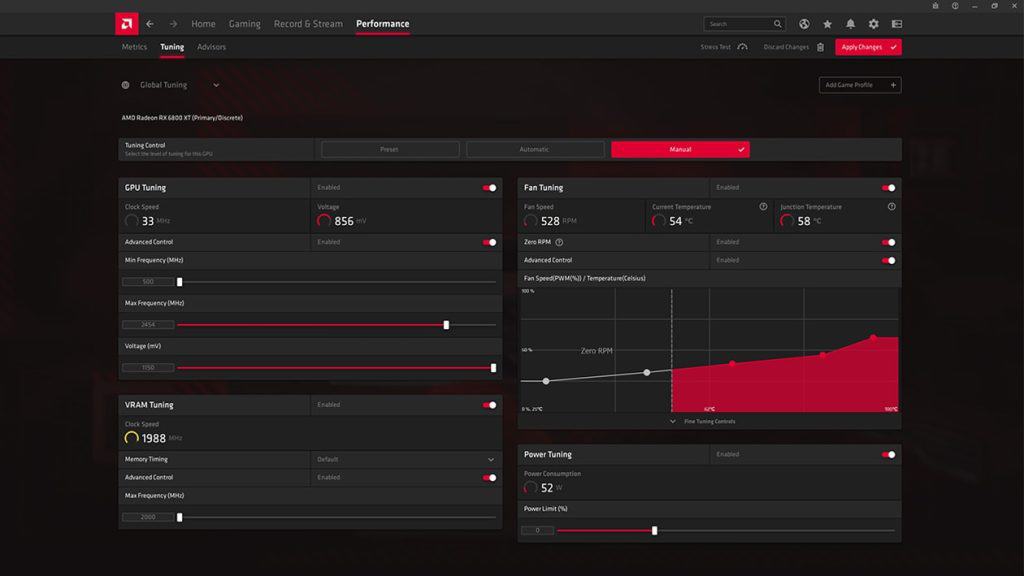
If you’re up for overclocking your card, you should read our MSI Afterburner guide. MSI Afterburner is one of the most favored apps for overclocking. Both AMD and Nvidia have built-in overclocking support in their own GPU-dedicated software. Below, I’ve listed the top five variants of each according to their boost clock speed.
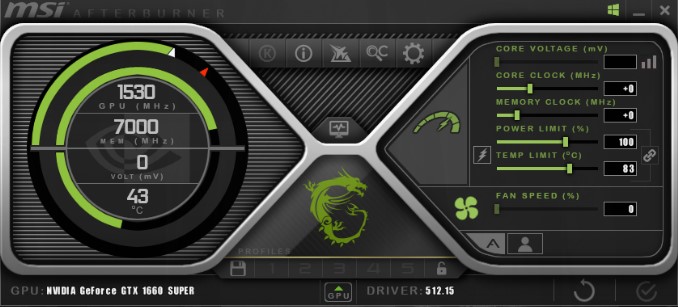
| GTX 1050 Ti Variants | Boost Clock | RX 570 Variants | Boost Clock |
|---|---|---|---|
| Colorful iGame GTX 1050 Ti Flame Ares U-TOP | 1,518 MHz | Sapphire NITRO+ RX 570 | 1,340 MHz |
| ZOTAC GTX 1050 Ti OC Edition | 1,506 MHz | Sapphire NITRO+ RX 570 8 GB | 1,340 MHz |
| ASUS ROG STRIX GTX 1050 Ti GAMING OC | 1,493 MHz | Dataland RX 570 X-Serial | 1,320 MHz |
| Colorful iGame GTX 1050 Ti Flame Ares U | 1,493 MHz | PowerColor Red Devil RX 570 OC | 1,320 MHz |
| Colorful iGame GTX 1050 Ti Vulcan U | 1,493 MHz | AREZ STRIX RX 570 GAMING OC | 1,300 MHz |
Winner: GTX 1050 Ti
Also Read: Guide to Undervolting your CPU/GPU
Core Configuration
A GPU’s core configuration consists of several types of cores. The main cores are also known as shaders because they use shaders (generic programming languages) to operate. The most well-known shader is DirectX. Both cards support DirectX 12. The GTX 1050 Ti has a slight advantage because it uses the 12_1 version, while the RX 570 uses DirectX 12_0.
| GTX 1050 Ti | Shaders | RX 570 |
|---|---|---|
| 12 (12_1) | DirectX | 12 (12_0) |
| 4.6 | OpenGL | 4.6 |
| 3.0 | OpenCL | 2.1 |
| 1.3 | Vulkan | 1.2 |
| 6.4 | Shader Model | 6.4 |
The GTX 1050 Ti has fewer cores than the RX 570, with only 768 main (CUDA) cores. The RX 570 has more than double with 2,048 main cores (Stream Processors). The other core types include ROPs (Render Output Units), SM (Streaming Multiprocessors), and TMUs (Texture Mapping Units).
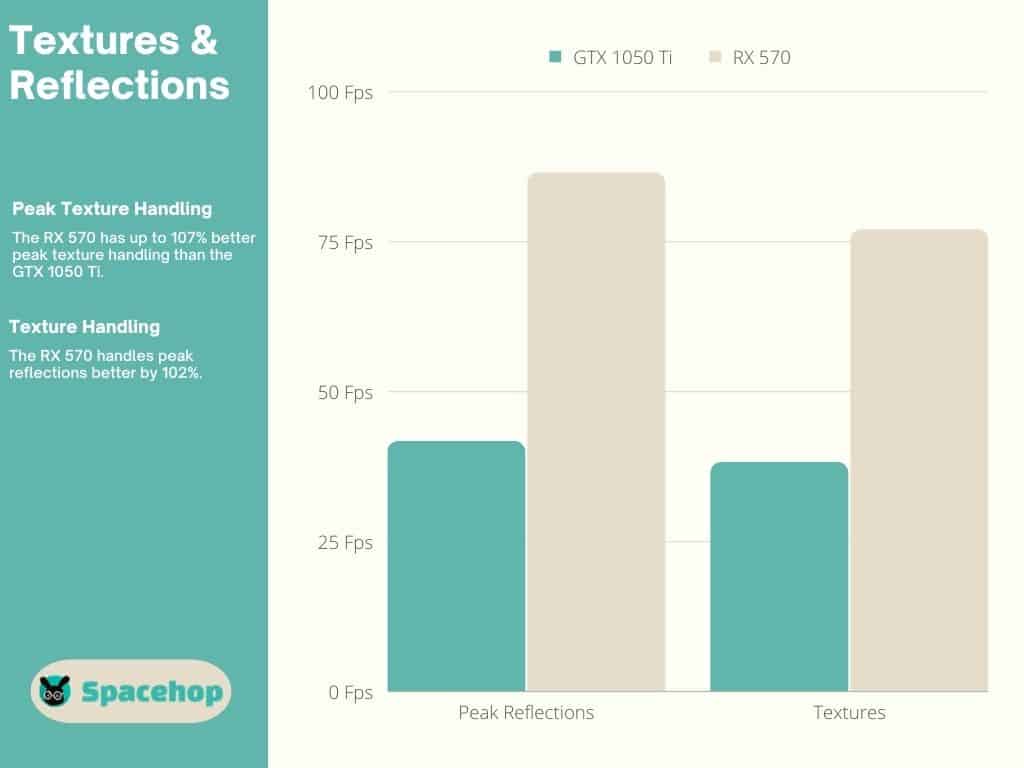
The RX 570 also wins in TMUs, another critical part of the rendering process. It has 128, completely overshadowing the GTX 1050 Ti’s 48 TMUs. That’s why the RX has up to 107% better texture handling than the 1050 Ti.
Winner: RX 570
Also Read: GTX and RTX Cards: What’s the difference?
VRAM & Memory Specs
The GTX 1050 Ti is available with a single VRAM configuration, 4GB GDDR5. The RX 570 was offered with two configurations; 4GB and 8GB GDDR5 VRAM. The GTX 1050 Ti’s 4 GB is connected using a 128-bit memory BUS, clocked at 1,752 MHz, delivering an effective 7 Gbps and bandwidth of just 112.1 GB/s.
The RX 570’s 8 GB VRAM is linked using a 256-bit BUS and is clocked at 1,750 MHz delivering an effective speed of 7 Gbps and a bandwidth of 224.0 GB/s.
Winner: RX 570
Also Read: VRAM and RAM Explained
Performance
Performance depends on more than just your GPU. You have to take your CPU, RAM, and even HDD speed into the calculation. I conducted my tests using an Intel i7 7700 CPU with 16 GB RAM. Neither card does that well at 4K unless you’re playing older titles, so I didn’t include graphs for 4K. I tested nine games, including Minecraft, Red Dead Redemption 2, GTA 5, Cyberpunk, and Apex Legends.
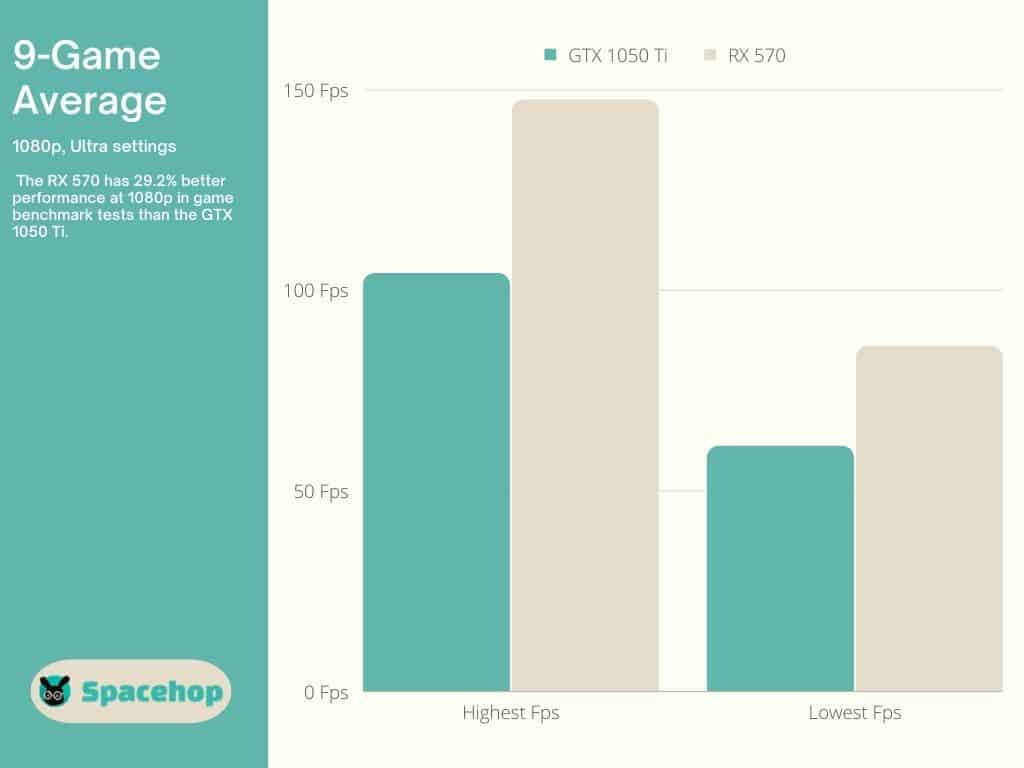
At 1080p, the RX 570 offered better average performance by a margin of 29.2%. New titles such as Cyberpunk or RDR 2 are somewhat unplayable, with Fps highs reaching just 20 and 19, respectively. The RX 570 does much better at 1080p with less demanding titles, such as Minecraft.
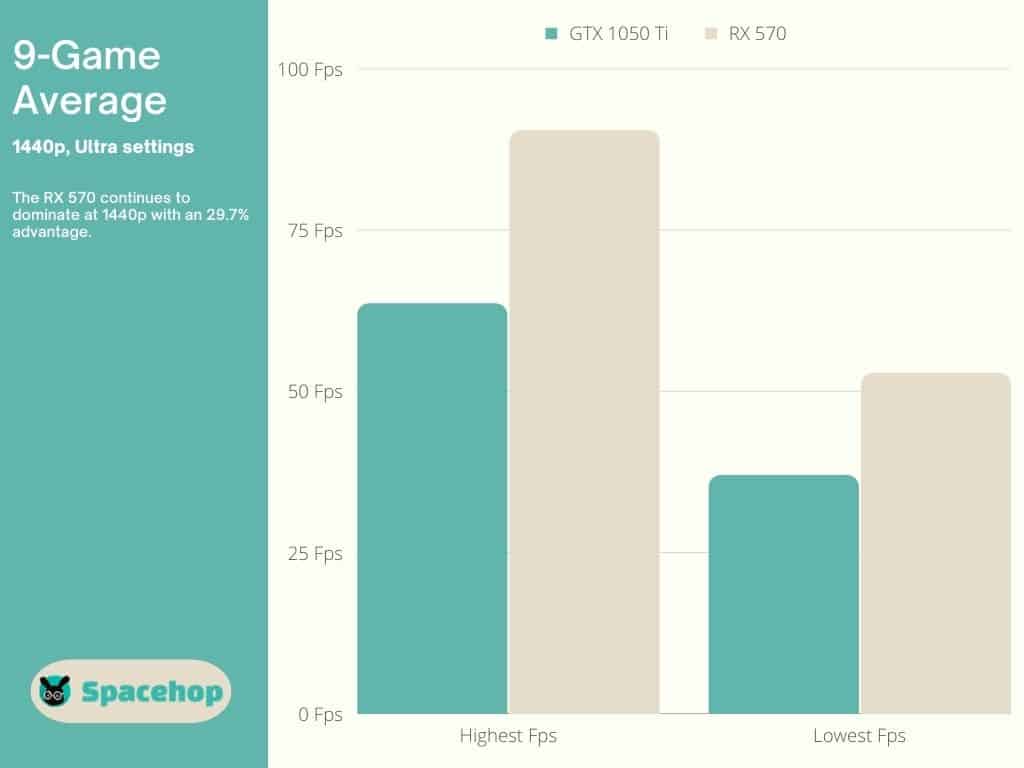
At 1440p. The RX 570 continues to dominate, but the margin increases to 29.7%.
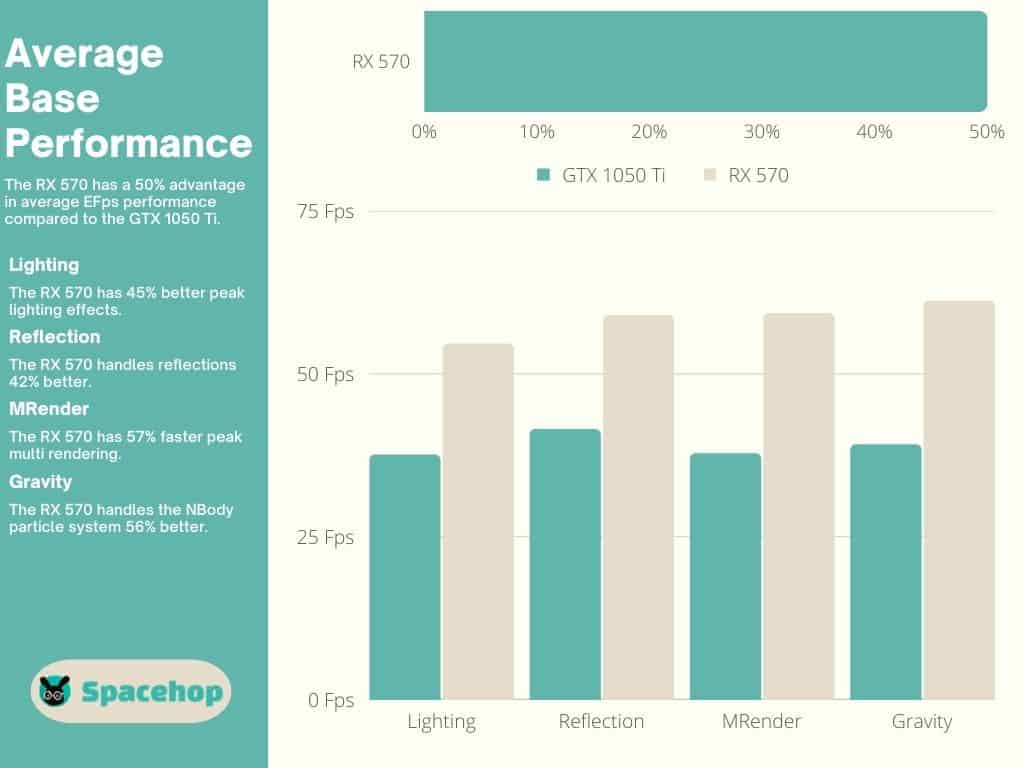
User benchmark tests place the RX 570 at a 50% advantage in EFps (Effective Frames per second), with a light drop (47%) when both cards are overclocked.
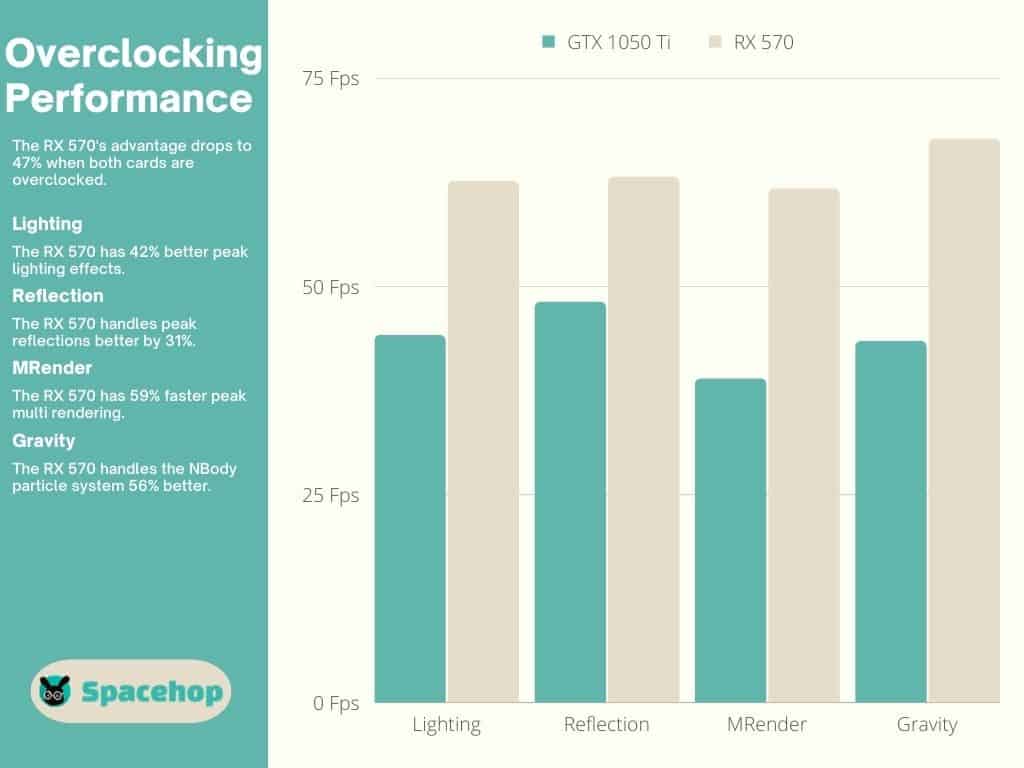
Winner: RX 570
Also Read: What is the difference between 1080p and 4K?
Connectivity
You probably won’t find any Founders Editions (FE) of either card, but it’s worth noting what resolutions they support. The GTX 1050 Ti supports Dual Link DVI-D, HDMI 2.0, and 1.4a DisplayPorts. The RX 570 supports the same outputs minus the DVI port. Most third-party variants feature altered output configurations, often ditching the DVI port altogether.
| GTX 1050 Ti Supported Outputs | Supported Resolutions | RX 570 Supported Outputs | Supported Resolutions |
|---|---|---|---|
| HDMI 2.0 | 4096 x 2160 @ 60 Hz | HDMI 2.0b | 4096 x 2160 @ 60 Hz |
| DisplayPort 1.4a | 7680 × 4320 at 60 Hz, 3840 × 2160) at 120 Hz | DisplayPort 1.4a | 7680 × 4320 at 60 Hz, 3840 × 2160 at 120 Hz |
| Dual Link DVI-D | 2560 x 1600 | – | – |
Winner: GTX 1050 Ti
TDP
TDP refers to several things, two of which are important here: Thermal Design Power and Thermal Design Point. The former is how much power a subsystem is allowed to draw from your PSU. The latter is how much heat it’s allowed to produce. The GTX 1050 Ti uses half the power (75 W) required by the RX 570 (150 W). The 1050 Ti requires a 250 W PSU, while the RX 570 requires a 450 W PSU.
Thermal Design Point designates how much heat that subsystem is allowed to produce. The GTX 1050 Ti has a temperature limit of 97℃ (206.6°F). The RX 570 has a limit of 98℃ (208.4°F). During testing, the GTX hit 65℃ (149°F), and the RX 570 hit 74℃ (165.2°F).
Winner: GTX 1050 Ti
Pricing & Availability
The GTX 1050 Ti was announced at a $139 MSRP. The RX 570 was announced at a $169 MSRP. More often than not, the official MSRP is irrelevant, and prices are usually above it right off the bat. I consider the RX 570 an extremely overpriced card. You can get RTX 30 and RX 6000 cards at some of these prices.
Sapphire variants are the most expensive, and this Sapphire Nitro+ variant proves it with a price set at 311% above MSRP. An MSI Gaming variant priced 194% above will also set you back unduly. This ASRock Phantom Gaming variant is priced at 129% above, for example. The only deal worth considering is this XFX Black Edition, currently priced at MSRP.
You can find more deals for the GTX 1050 Ti than the RX 570, and they’re better too! Among the most expensive is this ASUS Phoenix variant, priced at 140% above MSRP. Thankfully it’s on a 50% sale now, and it’s priced at just 35% above. Another currently available option is this MSI variant, priced at 11% above (32% sale).
Amazon prices listed above are subject to change. All prices mentioned are at the time of publishing this article.
Conclusion
So, to answer whether you should buy either of these in 2023, I have to say no! The RX 570 does beat the GTX 1050 Ti in this GTX 1050 Ti vs RX 570 comparison, but its prices are crazy. I saw RTX 3060 Ti cards on sale at lower prices just last month and RX 6600 prices below that of the RX 570 Sapphire variant I linked above.
If you consider that either of these offers 64-140% better performance than the RX 570, and the 1050 Ti offers even lower performance, there’s no reason to waste your money on the GTX 1050 Ti or the RX 570 in 2023.